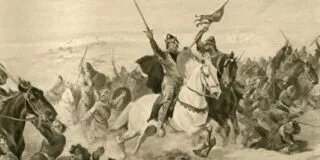The history facts they teach you in school are interesting, sure, but everyone knows that stuff. It’s the facts not many people know that make history truly interesting!
For example, did you know that the longest year in history was over 400 days long?! And did you know that Hitler helped design a vehicle that we still drive today?
It makes you wonder how many things about the world’s history you actually know…
Well, here we’d like to educate you on some of the lesser-known history facts that they don’t teach you at school!
Prepare to be amused & amazed with this huge round-up of the top 100 craziest history facts you could ever know!
Augustus Caesar was the wealthiest man to ever live in history.
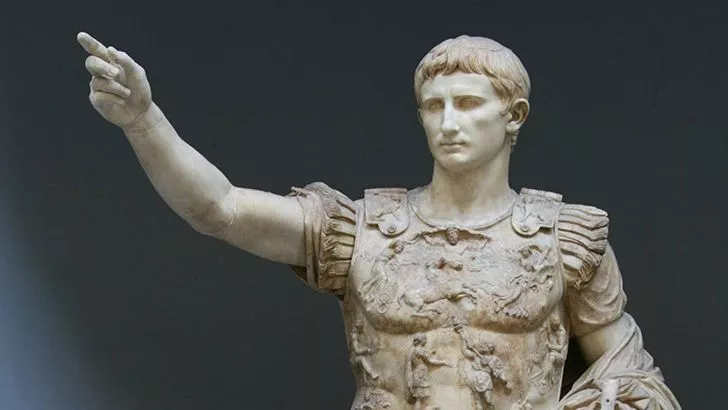
The nephew and heir of Julius Caesar, Roman Emperor Augustus, had an estimated net worth of $.46 trillion when counting for inflation.
Some say that Mansa Musa, king of Timbuktu, was the world’s wealthiest man as his wealth was apparently too great to count.
However, Augustus’s staggering wealth could be measured.
Alexander the Great was buried alive… accidentally.
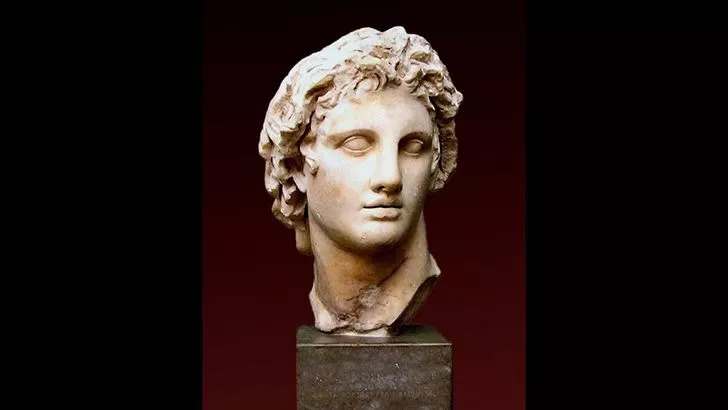
At age 32, when he died, Alexander the Great had conquered and created the largest land-based empire the world has ever seen. It stretched from the Balkans to Pakistan.
In 323 BC, Alexander fell ill, and after 12 days of excruciating pain, he seemingly passed away.
However, his corpse didn’t show any signs of rot or decomposition for a whole six days.
Modern-day scientists believe Alexander suffered from the neurological disorder Guillain-Barré Syndrome.
They believe that when he “died,” he was actually just paralyzed and mentally aware. Basically, he was horrifically buried alive!
The world’s most successful pirate in history was a lady.
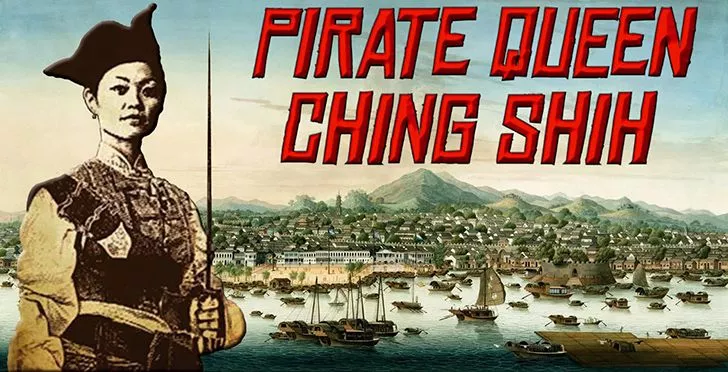
Named Ching Shih, she was a prostitute in China. This was until the Commander of the Red Flag Fleet bought and married her.
But rather than just viewing her as a wife, her husband considered her his equal, and she became an active pirate commander in the fleet.
Ching Shih soon earned the respect of her fellow pirates. So much so that after her husband’s death, she became the captain of the fleet.
Under Shih’s leadership, the Red Flag Fleet consisted of over 300 warships, with a possible 1,200 more support ships. She even had a possible 40,000 – 80,000 men, women, and children.
They terrorized the waters around China. The Red Flag Fleet was such a fearsome band of raiders that the Chinese government eventually pardoned Ching Shih and her entire fleet – just to get them off the high seas!
In the Ancient Olympics, athletes performed naked.
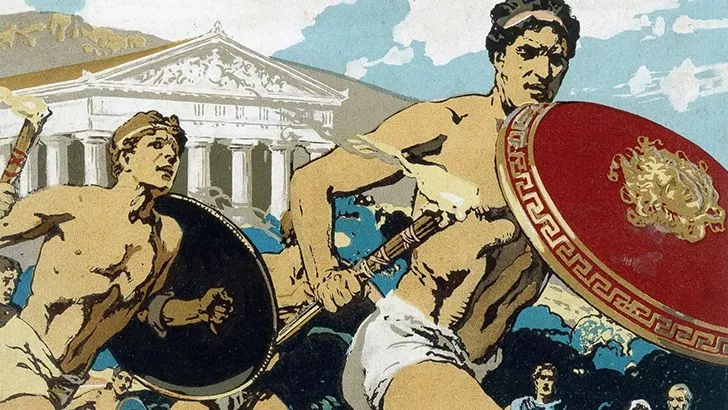
The athletes did this to imitate the Gods but also to help them easily clear toxins from their skin through sweating after each attempt at a sport.
In fact, the word “gymnastics” comes from the Ancient Greek words “gumnasía” (“athletic training, exercise”) and “gumnós” (“naked”).
This translates as “to train naked.”
Julius Caesar was stabbed 23 times.
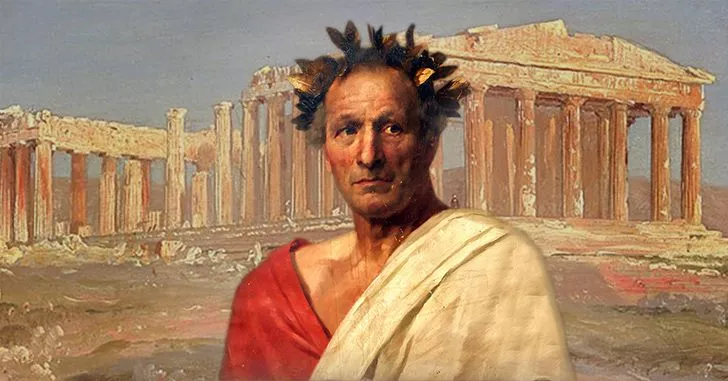
Julius Caesar is probably the most iconic name associated with the Romans. Likewise, his assassination and death are also highly notorious.
Due to his coup d’état of the Roman Republic and his proclamation of himself as Dictator for Life, along with his radical political views, a group of his fellow Roman senators led by his best friend Brutus assassinated him on March 15, 44 BC.
During the assassination, Caesar was stabbed at least 23 times before finally succumbing to his wounds.
He passed away with fabled words to his former best friend Brutus, allegedly being, “you too, sweet child?”
The Colosseum was originally clad entirely in marble.

When you visit or see the Colosseum these days, you’ll notice how the stone exterior appears to be covered in pockmarks all across its surface.
Whilst you might assume this is just a degradation of the material due to its age, it is actually because it was originally clad almost entirely in marble.
The reason for the pockmarks is after the fall of Rome; the city was looted and pillaged by the Goths. Yes, that’s right, the Goths!
They took all of the marble from the Colosseum and stripped it (mostly) down to its bare stone setting.
The holes in the stone are from where the iron clamps and poles attaching the marble cladding to it have been ripped out.
It was named the Colosseum because it was next to a statue called the Colossus.

It was originally known as the Amphitheatrum Flavium, or Flavian Amphitheatre, as it was constructed during the Flavian dynasty.
Residents of Rome nicknamed it the Colosseo.
This was due to the fact that it was built next to a 164-foot statue of Emperor Nero known as “the colossus of Nero.”
Rasputin survived being poisoned and shot.
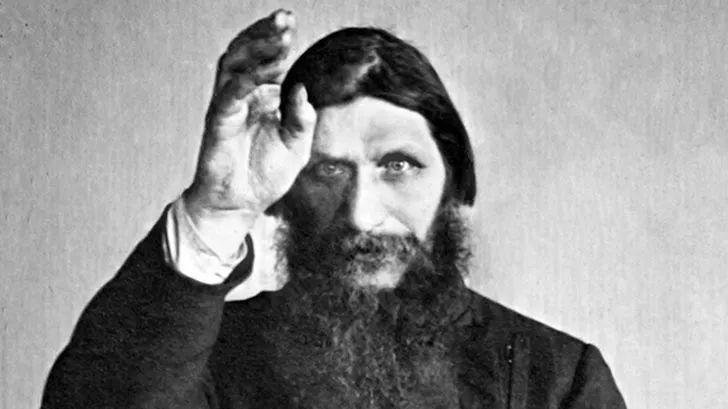
Grigori Rasputin was a Russian mystic and supposed holy man. He became friends with the last Russian Tsar and Tsarina. Over time, he came to influence the Russian royals, much to the displeasure of many members of the Russian nobility.
This, combined with his drunkenness and lechery, led to several Russian nobles forming a plot to assassinate the man.
They invited him over to one of their houses, gave him cakes and wine laced with cyanide, all to no effect, and then shot him in the chest.
To their horror, Rasputin started to cough, and they realized he was still alive!
How did they fix the problem? The nobles shot Rasputin two more times – once in the head. Finally, they threw his body into the frozen Malaya Nevka River.
There were female Gladiators.
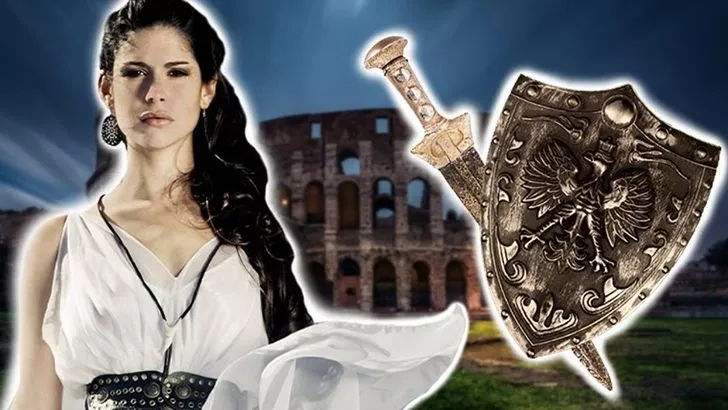
A female gladiator was called a Gladiatrix, or Gladiatrices (plural). They were rarer than their male counterparts.
Gladiatrices served the same purpose of executing criminals, fighting each other, and fighting animals in Rome’s various fighting pits.
The Vikings were the first people to discover America.
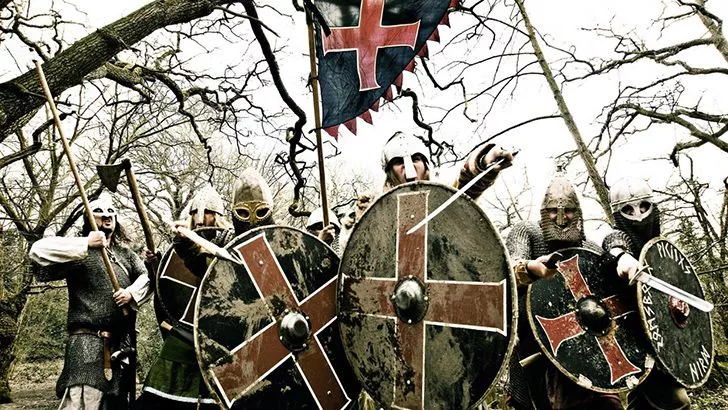
Half a millennium before Christopher Columbus “discovered” America, Viking chief Leif Eriksson of Greenland landed on the Island of Newfoundland in the year 1,000 AD.
The Vikings under Leif Eriksson settled Newfoundland as well as discovering and settling Labrador further north in Canada.
The Luftwaffe had a master interrogator whose tactic was being as nice as possible.

Hanns Scharff was a master interrogator who was very much against physical torture and brutality.
His techniques were so successful that the US military later incorporated his methods into their own interrogation schools.
Scharff’s best tactics for squeezing information out of prisoners included: nature walks without guards present, baking them homemade food, cracking jokes, drinking beers, and afternoon tea with German fighter aces.
He even took trips to visit fellow POWs and swimming pool parties. And on some rare occasions, even test flights of German fighter aircraft.
In Ancient Asia, death by elephant was a popular form of execution.
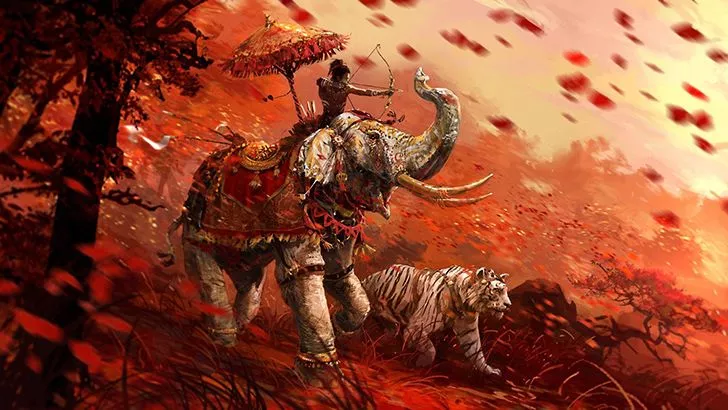
As elephants are very intelligent and easy to train, it proved easy enough to train them as executioners and torturers.
They could be taught to slowly break bones, crush skulls, twist off limbs, or even execute people using large blades fitted to their tusks.
In some parts of Asia, this method of execution was still popular up to the late 19th Century.
The UK government collected postcards as intelligence for the D-Day landings.

Starting in 1942, the BBC issued a public appeal for postcards and photographs of mainland Europe’s coast, from Norway to the Pyrenees.
This was an intelligence-gathering exercise. Initiated by Lieutenant General Frederick Morgan, he was searching for the hardest beaches to defend.
The postcards were sent to the War Office and helped form part of the decision to choose Normandy as the location for the eventual D-Day landings.
When Marcus Crassus died, molten gold was poured down his throat.

Marcus Licinius Crassus was known as the wealthiest man in Rome during his life.
The son of a Consul of Rome, Crassus fought in Sulla’s Civil War, played a key part in defeating Spartacus and ending the Third Servile War, and formed the first Triumvirate with Julius Caesar and Pompey the Great.
A shrewd man, throughout all he did, Crassus accumulated more and more wealth – and it was his thirst for wealth that would eventually lead to his downfall.
Leading his troops in an ill-fated conquest of Parthia (modern-day Iran), Crassus and his forces were brutalized and bested by the Parthians time and time again.
After an unsuccessful parley for peace with the Parthian leaders, Crassus was killed. The Parthians poured molten gold down his throat as a symbol of his thirst for wealth.
Some even say that his gilded head and hands were sent to the Parthian King to keep as trophies of his victory against Crassus and Rome.
Germany uncovers 2,000 tons of unexploded bombs every year.

Over the course of WWII, the Allied armies dropped roughly 2.7 million tons of bombs over Nazi-occupied Europe. Half of that landed in Germany.
Before any construction work can begin in Germany, the ground must undergo extensive surveys to look for unexploded ordinances.
Sometimes bombs are discovered naturally. One example was from 2011…
45,000 people were evacuated from their homes when a drought revealed a 4,000-pound “blockbuster” bomb lying on the bed of the River Rhine in the middle of Koblenz.
In Ancient Greece, wearing skirts was manly.

In fact, the Ancient Greeks viewed trousers as effeminate and would mock any men who wore them.
A singing birthday card has more computer power in it than the entire Allied Army of WWII.

I bet Hitler, Churchill, Stalin, and Roosevelt would have killed to get their hands on one of those cards!
The computer chip within them was so powerful by comparison that it would be inconceivable to the leaders of that time how we simply throw them away!
In 1386, a pig was executed in France.

There wasn’t a great detail of civil rights in the Middle Ages, and as it turns out, there weren’t a great of animal rights either. So much so that they were even subject to human justice.
One such case happened in Falaise, France, where a pig attacked a child’s face and went on to later die from their wounds.
The pig was arrested, kept in prison, and then sent to court where it stood trial for murder, was found guilty and then executed by hanging!
Cleopatra’s reign was closer to the moon landings than the Great Pyramid being built.

This is one of those facts that give you some impression of just how expansive the life of the Egyptian Empire truly was.
Cleopatra reigned from 51 BC to 30 BC, roughly 2,500 years after the Great Pyramid of Giza was built (between roughly 2580 BC – 2560 BC) and roughly 2,000 years before the first lunar landings in 1969.
Shrapnel is named after its inventor.

British Army Officer Henry Shrapnel was the first person to invent an anti-personnel shell that could transport a large number of bullets to its target before releasing them.
This was all at a far greater distance than the current rifle fire at the time.
Since 1945, all British tanks have been equipped with tea-making facilities.

Before this time, British tank crews had to exit their armored vehicles when they wanted to make a quick coffee.
On the road to Caen in 1944, a German Tiger tank ambushed and destroyed a parked column of almost thirty armored British vehicles in 15 minutes whilst the crew was having an impromptu tea break.
This made the British high command realize if tank crews could make a brew on the go, then they wouldn’t be susceptible to being caught with their pants down and their kettles out by the enemy.
So after this, the next British-designed battle tank, the Centurion, came with a boiler fitted to the interior powered by the tank’s electric circuits so the crew would never be short of a lovely warm cup of tea!
During World War I, the French built a “fake Paris.”

Complete with a replica of Champs-Elysées and Gard Du Nord, this “fake Paris” was built by the French towards the end of WWI. It was built as a means of throwing off German bombers and fighter pilots flying over French skies.
It also even had a fake railway that lit up at certain points to provide the illusion from above of a train moving along the tracks!
The Eastern Roman Empire’s weapon, called Greek Fire, was used in ship-mounted flamethrowers.
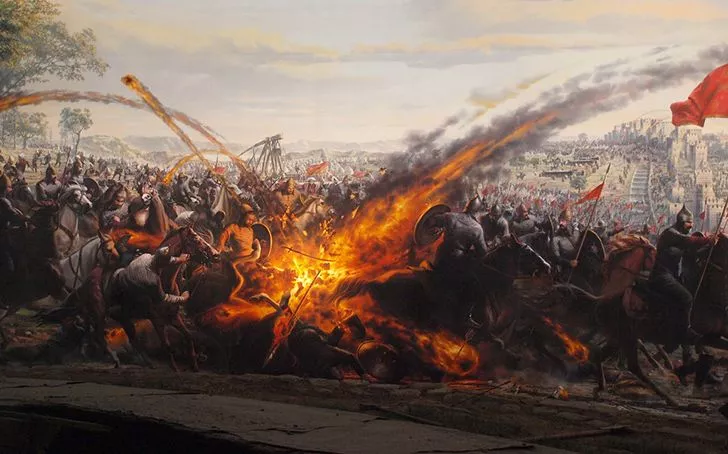
The secret of how to make Greek Fire was lost with the fall of the Roman Empire. This weapon is so unique and deadly due to the fact that throwing water onto it would only feed the fire. It was almost gelatinous in texture and would stick to things.
It was mostly used in naval warfare, as the large flamethrowers needed for its projectile use could be better accommodated by ships rather than infantry.
The Greek Fire would easily demolish a fleet of wood and canvas ships floating on water.
An ancient text called the Voynich Manuscript still baffles scientists.
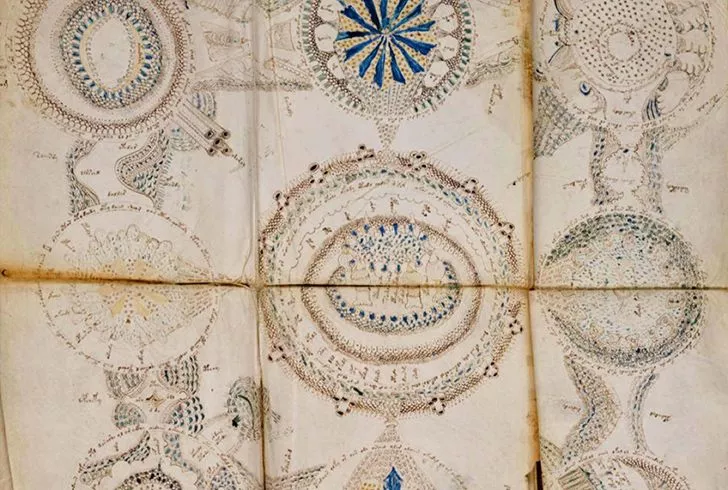
Hand-written in an unknown language, the Voynich Manuscript has been carbon-dated to roughly 1404 – 1438.
Some of the pages are missing, and some of them are foldable pull-out pages, while most pages have illustrations.
Hundreds of cryptographers and master codebreakers have tried to decipher it over the years, with none succeeding in grasping its meaning or origin.
A Japanese fighter pilot once dropped wreaths over the ocean to commemorate the dead from both sides.

During a sea battle in the Pacific Ocean in December 1940, two Royal Navy ships, the HMS Prince of Wales and the HMS Repulse, were sunk by Japanese fighters.
The following day, Japanese Flight Lieutenant Haruki Iki flew to the location of the battle and dropped two wreaths over the seas.
One to commemorate the pilots of the Japanese Naval Air Force who died. The other is for the sailors of the British Navy, who fought so valiantly to defend their ships.
4% of the Normandy beaches are made up of shrapnel from the D-Day Landings.

More than 5,000 tons of bombs were dropped by the Allies on the Axis powers as part of the prelude to the Normandy landings.
Scientists have studied the sand on the beaches of Normandy, and they’ve found microscopic bits of smoothed-down shrapnel from the landings.
They estimate that, within 150 years, the beach will have fully lost any remaining shrapnel to rust and erosion.
The saying “fly off the handle” originates from the 1800s.

It’s a saying that refers to cheap axe heads flying off their handles when swung backward before a chop.
“Fox Tossing” was once a popular sport.

Popular with Europe’s aristocracy during the 17th and 18th centuries, fox tossing would involve a person – or a couple – throwing a fox as far and as high as they could!
Turkeys were once worshiped as Gods.

The Mayan people believed turkeys were the vessels of the Gods and honored them with worship.
They were even domesticated to have roles in religious rites!
Captain Morgan was a real guy.
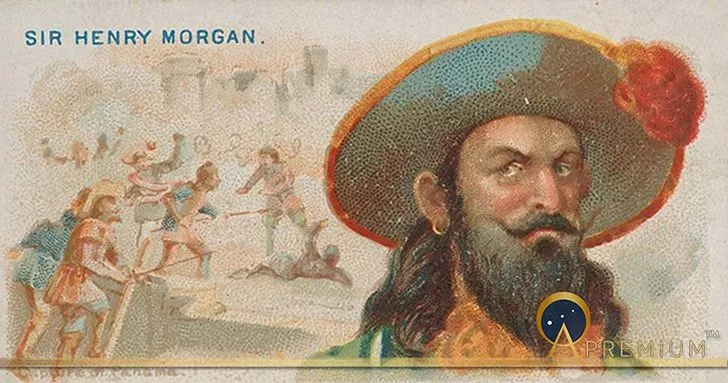
He was also a real captain, too!
The face of the much-loved rum brand was a Welsh privateer who fought against the Spanish alongside the English in the Caribbean.
His full name was Sir Henry Morgan, and he was knighted by King Charles II.
Captain Morgan died in 1688 in Jamaica as a very wealthy man.
Genghis Khan was tolerant of all religions.
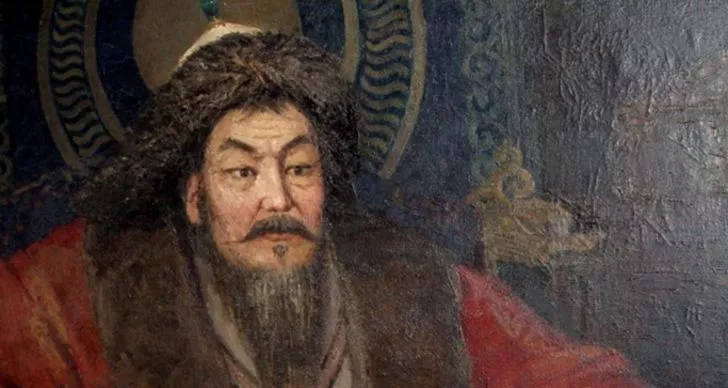
Back then, the world was a very intolerant place. More often than not, conquering warlords and emperors weren’t open to religions other than their own.
Genghis Khan was very different from other conquerors, though, in many different ways.
One was his interest in learning philosophical and moral lessons from other religions.
Despite being a Tengrist, he often consulted with Buddhist monks, Muslims, Christian missionaries, and Taoist monks.
Thomas Edison didn’t invent most of the stuff he patented.
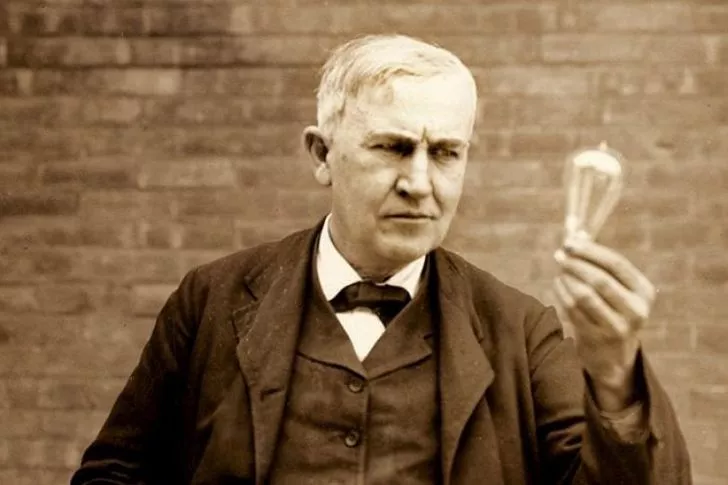
It’s fair to say that Edison was one of the world’s most notorious intellectual property thieves.
Of the 1,093 things he smashed a patent on, he stole most of them off real geniuses like Nikola Tesla, Wilhelm Rontgen, and Joseph Swan – the latter of whom originally invented the lightbulb!
Albert Einstein turned down the presidency of Israel.

Einstein wasn’t a citizen of Israel. However, he was Jewish. The German-born physicist was offered the post but turned it down in 1952, saying:
“I am deeply moved by the offer from our State of Israel, and at once saddened and ashamed that I cannot accept it. All my life I have dealt with objective matters, hence I lack both the natural aptitude and the experience to deal properly with people and to exercise official functions.”
Roman Emperor Caligula made one of his favorite horses a senator.
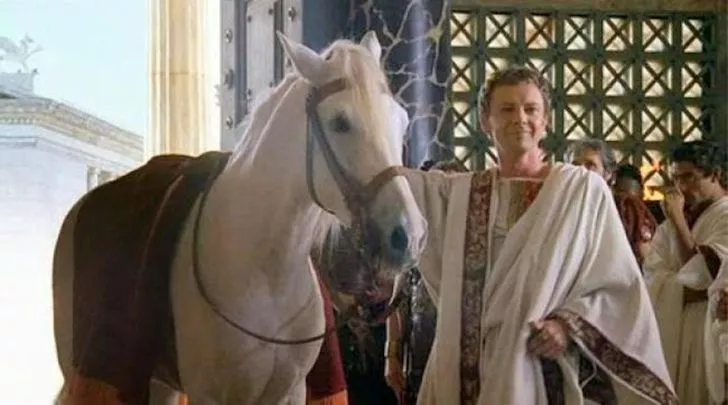
If you didn’t know anything about Caligula, then this is a pretty good way to get the impression.
He was infamous for his brutality and madness. Caligula fed criminals to animals and had conversations with the moon.
He loved his horse – called Incitatus – so much that he gave him a marble stall, an ivory manger, a jeweled collar, and even a house!
Caligula made his horse a senator and allegedly planned to make him Consul before his assassination.
Pope Gregory IX declared war on cats.
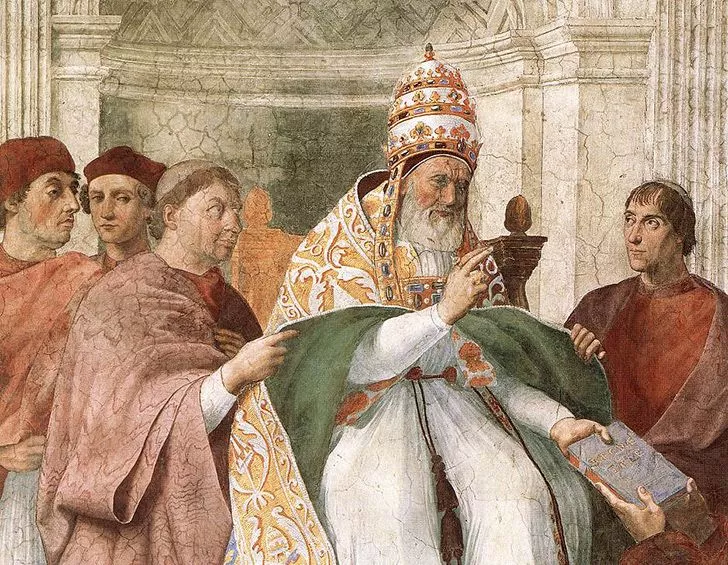
He declared cats to be agents of devil worshippers. Not all cats, though; it was black moggies in particular.
The Pope declared that they should be exterminated.
The Leaning Tower of Pisa was never straight.

Known worldwide for its four degrees lean, this freestanding bell tower was constructed in the 12th Century.
When construction on the second story started, due to the unstable ground it was built on, the tower started to lean.
After this, the lean only increased as the construction process went on, and it went on to become more iconic than the tower itself!
During the Great Depression, people made clothes out of food sacks.

People used flour bags, potato sacks, and anything made out of burlap.
Because of this, food distributors started to make their sacks more colorful to help people remain a little bit fashionable.
Lord Byron kept a bear in his college dorm.

The famous Romantic-period poet was peeved when he found out that Trinity College, Cambridge, didn’t allow dogs on campus.
So, to rebel against the man’s draconian rules, he decided to bring a tame bear with him to campus.
Whilst the college’s authorities tried to protest, he won his case as the rules didn’t explicitly state you couldn’t bring a bear to campus.
To parade his victory and gloat to the powers that be, Byron often took his bear for walks around campus on a lead!
Iceland has the world’s oldest parliament in history.

Called the Althing, it was established in 930 and has stayed as the acting parliament of Iceland since then.
Since the end of WWI, over 1,000 people have died from leftover unexploded bombs.

During the Great War, an estimated 200 pounds of explosives were fired per square foot of territory on the Western front. However, not all of these shells exploded.
Every year since the end of the war, something called an “iron harvest” takes place.
This is the annual “harvest” or unearthing of unexploded WWI bombs. As well as grenades, artillery shells, and other explosives which occur mainly during the spring planting and autumn harvest in the fields that were once the Great War’s arena.
Since 1919, over 1,000 civilians and ordnance collectors have died from explosions caused by these in France and Belgium.
46 BC was 445 days long and is the longest year in human history.

Nicknamed the annus confusionis, or “year of confusion,” this year had two extra leap months inserted by Julius Caesar.
This was in order to make his newly-formed Julian Calendar match up with the seasonal year.
This calendar is a variation that is still used in most places across the world today.
100 million years ago, the Sahara Desert was inhabited by galloping crocodiles.

Back then, the Sahara Desert was a lush plain full of life – and also full of predators.
In 2009, fossil hunters found the remains of crocodiles. These remains had large land-going legs that were capable of galloping across the land at breakneck speeds.
They could easily snap up unlucky dinosaurs in their jaws!
During the Victorian period, it was normal to photograph relatives after they died.
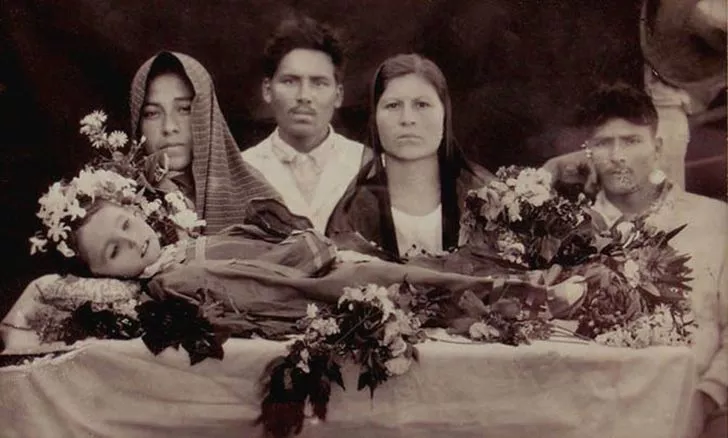
People would dress their newly-deceased relatives in their best clothing and then put them in lifelike poses and photograph them.
They did this to preserve one last image of their dead loved one in a strange form of commemoration.
One man survived both the atomic bombing of Hiroshima and then later Nagasaki.

Tsutomu Yamaguchi was a 29-year-old Naval Engineer on a three-month business trip to Hiroshima. On August 6, 1945, the Enola Gay dropped its atomic payload on the city.
Yamaguchi was less than 2 miles from ground zero and was thrown into a potato patch. He survived the blast and was able to make a perilous journey through the devastated city to the railway station.
Here, on August 7th, he boarded a train on an overnight ride to his hometown of Nagasaki.
On the morning of August 9th, he was with some colleagues in an office building when another boom split the sound barrier. A flash of white light filled the sky.
Yamaguchi emerged from the wreckage with only minor injuries on top of his current injuries. He had survived two nuclear blasts in two days.
The shortest war in history lasted 38 minutes.
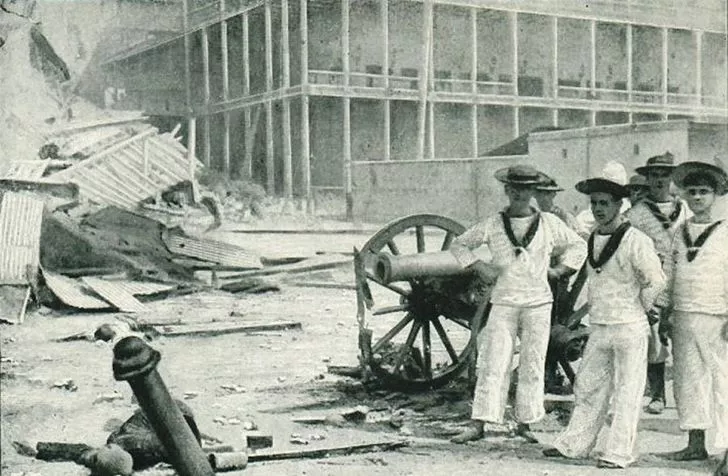
Fought between Britain and Zanzibar and known as the Anglo-Zanzibar War, this war occurred on August 27, 1896.
It was all over the ascension of the next Sultan in Zanzibar and resulted in a British victory.
Before the 19th Century, dentures were made from dead soldiers’ teeth.

Dentistry in 1815 wasn’t exactly as… “intricate” as it is today. In fact, it was downright savage!
After the Battle of Waterloo, dentists flocked to the battlefield to scavenge teeth from the tens of thousands of dead soldiers.
They then took their bounty to their dental workshops are crafted them into dentures for toothless rich people.
Tug of War used to be an Olympic sport.

It was part of the Olympic schedule between 1900 and 1920 and occurred at 5 different Summer Olympic Games.
The nation to win the most medals in this was Britain with 5 (2 gold, 2 silver, 1 bronze), then the USA with 3 (1 gold, 1 silver, 1 bronze), while Sweden had one gold medal, France and the Netherlands had one silver medal, and Belgium won a bronze medal.
People were buried alive so often that bells were attached to their coffins.

Due to medicine not being so great, comatose people were sometimes mistakenly buried alive.
In order to counteract these potential blunders, people were buried with little bells above ground. These bells were attached to a string, which went into the coffin.
If the person were buried alive and later woke up, they would tug on the string that would ring the bell above ground.
Someone would hear it and then dig the person out of their premature resting place.
The term “saved by the bell” does not originate from people being buried alive.

Because of bells attached to coffins back in the day, people wrongly assume that the term “saved by the bell” comes from people being saved by these coffin bells.
However, the term actually comes from boxing.
It comes from being saved from a knockout or countdown by the ring of a bell, which signals the end of the current round.
George Washington didn’t have wooden teeth.
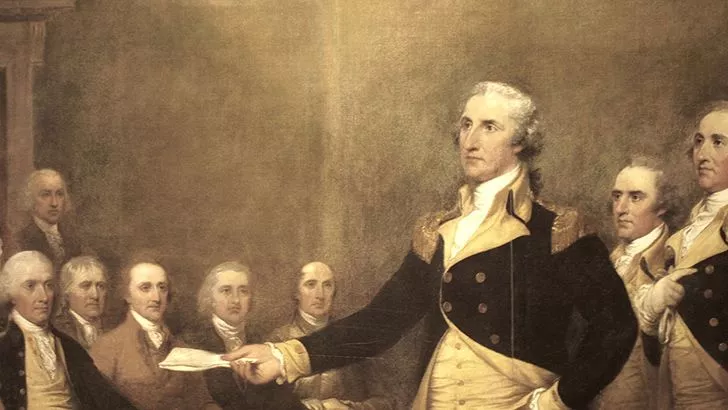
It’s often said that George Washington had wooden teeth, however, this is as false as the dentures he actually wore.
George had luxury dentures that were made out of gold, lead, and ivory, as well as being a mixture of animal and human teeth!
During a Roman Triumph, soldiers sang lewd songs about their commander to amuse the crowds.
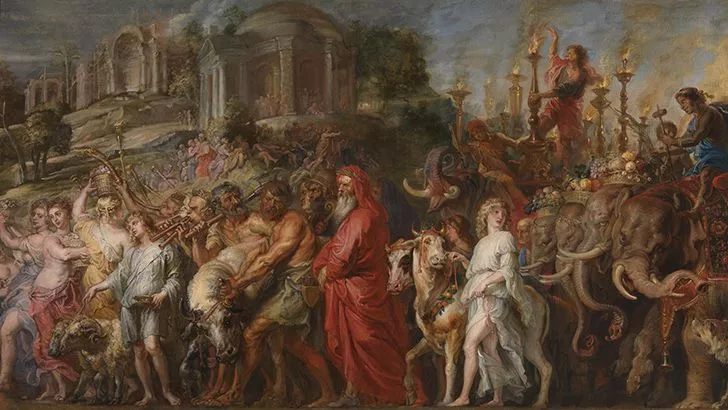
A Roman Triumph was a sort of parade. During this, a Roman General who had conquered new territory for Rome marched through the streets with his troops.
They showed off the spoils of war in front of huge crowds of partygoing spectators.
There were many customs that occurred during a Triumph. One of which was for the returning Roman soldiers to sing crude and banter-like chants about their commanders to the amusement of the crowds.
One that survived history is from Julius Caesar’s Gallic Triumph. His soldiers sang something like: “Romans hide away your wives, the bald adulterer is here. We drank away your gold in Gaul, and now we’ve come to borrow more!”
Ancient Egyptian Pharaohs used their slaves as flycatchers.
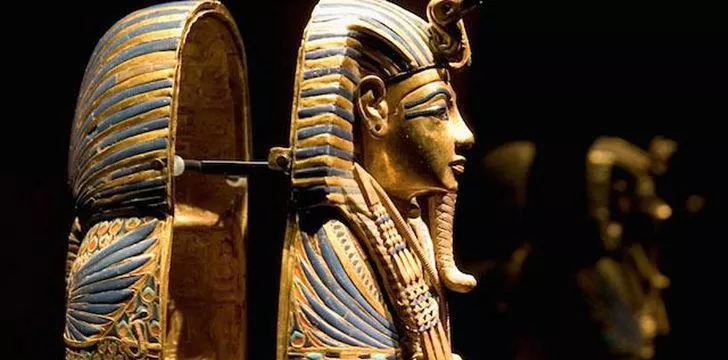
They would lather their slaves in honey, which would serve a dual purpose of attracting any flies to their slaves rather than themselves, as well as trapping and killing the flies.
In Ancient Rome, urine was used as a mouthwash.
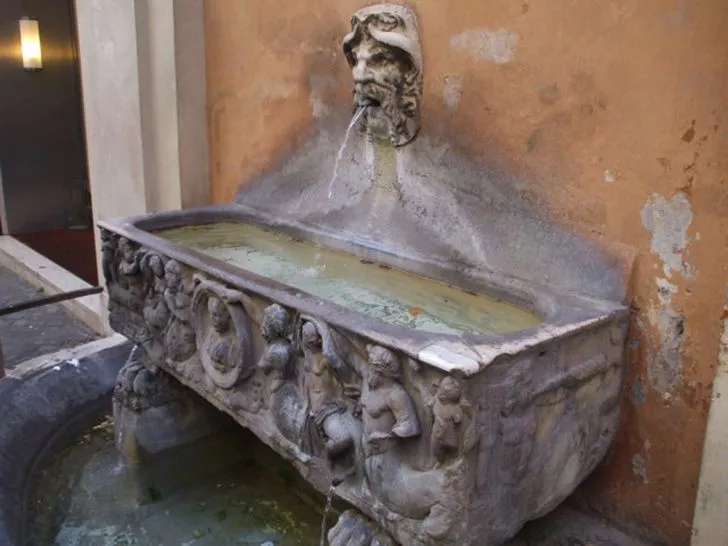
This is because urine contains a very high ammonia content, and ammonia is one of the most powerful and readily available natural cleaners on this planet!
In the Victorian era, men with mustaches used special cups.

As a Brit, this is probably my favorite historical fact on this list!
Pragmatically called “mustache cups,” these specially-made mugs had guards on them, which prevented a man’s mustache from dipping into their warm cup of tea!
The earliest-ever lottery was during the Chinese Han Dynasty between 205 – 187 BC.

Although it’s not exactly known what the prizes were, it’s believed that Chinese citizens of this era could draw keno slips (in the way one draws straws) for a nominal fee.
This lottery was created to help fund major government projects, including the construction of the Great Wall of China.
The Roman lottery’s prizes were known and were damn savage at times.
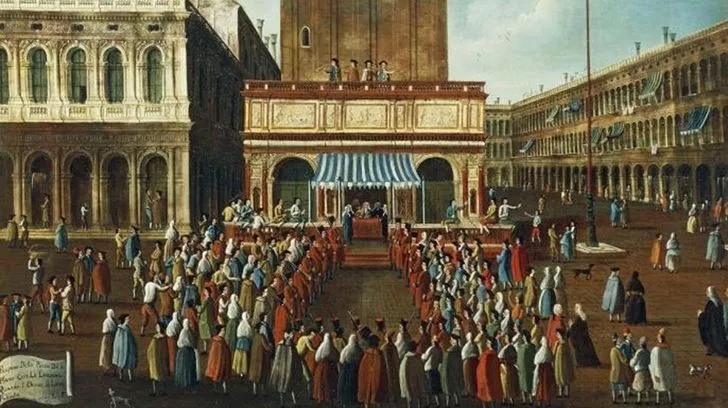
Created by Emperor Augustus Caesar for the same reason, to fund government projects such as repair works, the Roman lottery came with prizes that were objects that usually varied in value.
Pretty tame, right? Well, one Roman Emperor’s lottery prizes weren’t so friendly at all.
Elagabalus, who reigned between 218 & 222 AD, was known for his cruel running of the lottery. At first, his lottery was pretty brilliant and had prizes such as slaves or houses.
However, not long into his reign, he started having lottery tickets catapulted into crowds of gathered plebs.
He also catapulted live freakin’ venomous snakes into the crowd along with the lottery tickets! The prizes tended to be things like dead animals and death sentences. Even goddamn wasps and bees.
It should come as no surprise that he made for a pretty nasty emperor and was assassinated after four years at the age of 18!
Spartans were so rich that nobody had to work.

Ancient Sparta, during its Classical Age, was an immensely wealthy country. Mainly due to their conquest and domination of a neighboring race named the Helots.
When a Spartan boy reached adulthood and became a man, the Spartan state awarded him with an allotment of public farmland. They also rewarded him with a constituent of Helot slaves to work it.
This basically turned every Spartan citizen into a wealthy member of the conventional upper class. So they didn’t have to work for a living.
Still, private property existed, which is important because…
Spartan women owned most of the land and wealth in Sparta.
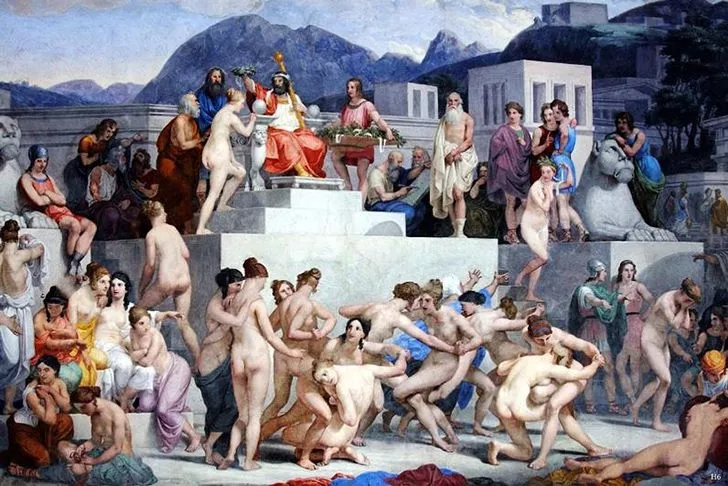
Spartan inheritance law was crazy progressive compared to the rest of Ancient Greek inheritance law. When a Spartan man died, his public state-given farmland went back to the state. However, his private land would go to his wife.
A lot of husbands died young in Sparta due to their militaristic culture, and when they did, their widows would often grow their inheritance over the course of their life before their own deaths.
Upon their deaths, their land would pass equally to both their male and female children.
So, a young woman who married a wealthy man would most likely inherit his fortune young. Then inherit their mother’s fortune and grow their own, becoming super ultra-rich.
They would then pass that on to their children and on and on, creating a crazy snowball inheritance effect.
The University of Oxford is older than the Aztec Empire.

Mind-boggling as though it may seem, the University of Oxford first opened its doors to students all the way back in 1096.
It became a fully-fledged university with student housing and a specific curriculum by 1249.
By comparison, the Aztec Empire is said to have originated with the founding of the city of Tenochtitlán at Lake Texcoco by the Mexica, which occurred in the year 1325.
The World War II army of the US is the biggest army in history.

Due in part to the surge of wartime patriotism and in part because of conscription, the US Army numbered 12,000,000 soldiers by the end of the war in 1945.
By 1943, the German military had reached 11,000,000 soldiers.
By the end of the war, the Soviet Union’s army (as formidable as it was) also reached 11 million soldiers.
Only 6 people died in the Great Fire of London.
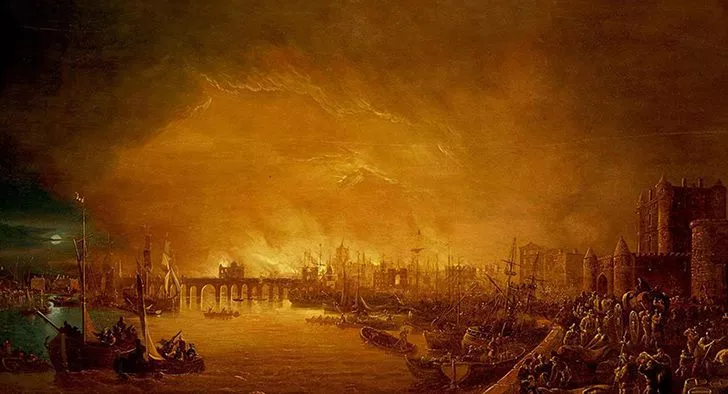
The great fire of 1666 apparently traces its way to a baker’s oven and caused massive damage across the city of London.
However, despite destroying over 13,500 houses and displacing 80,000 people, it only claimed the lives of 6 unlucky Londoners.
Count Dracula was inspired by a real person.

When Bram Stoker released his iconic horror classic in 1897, it was hailed as “the most blood-curdling novel of the paralyzed century” and terrified audiences worldwide.
However, the titular Count was based on none other than history’s own Vlad the Impaler.
As the ruling monarch of Wallachia, a Romanian region of Transylvania, Vlad soon made a fearsome reputation for himself by killing and impaling the still-twitching bodies of his enemies on long sticks which he planted outside his castle and all around his lands.
After Vlad’s eventual death at the hands of the Ottoman Empire, the history of his descendants is murky, which is what inspired Bram Stoker’s character of Count Dracula.
The most prolific female serial killer was a Hungarian Countess.

Named Elizabeth Báthory de Ecsed, she was born on August 7, 1560. She was accused of torturing and killing over 650 young women. Most of the women were between the ages of 10 and 14.
Her cruelty was limitless. She regularly bathed in the blood of virgins to preserve her youthful looks.
After facing accusations from many people, smallfolk and nobles alike, she was detained. However, she did not face trial due to her family’s aristocratic high standing.
Instead, she was privately imprisoned in a windowless room for four years until she died in 1614.
For 12 years during the French Revolutionary Period, France had a whole new calendar.
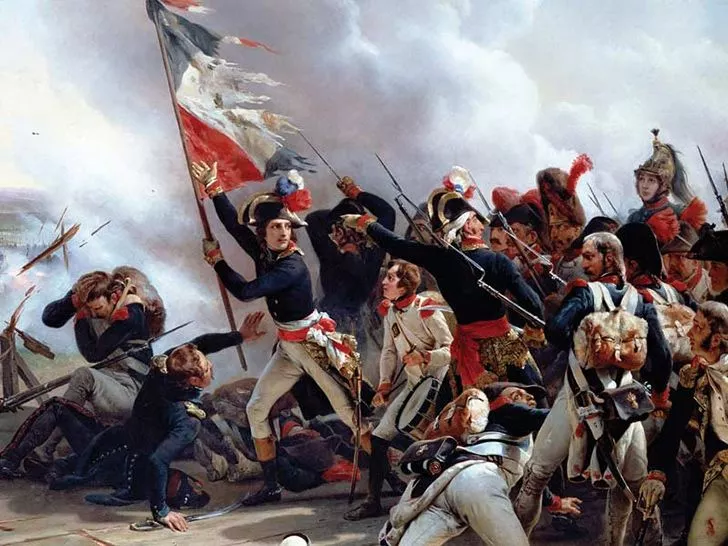
Not just that, but they also had a whole new timekeeping system too! Between 1793 and 1805, the ruling French government used the French Republican Calendar to remove all religious and royalist ties to the old calendar.
It was also part of a wider effort to decimalize France in terms of time, currency and metrication.
The French Republican Calendar had 10-hour days, with 100 minutes to an hour and 100 seconds to a minute.
Whilst this crazy calendar did have 12 months, each one of these months was 30 days. They were all given new names that reflected a meaning for each season.
For example, one in winter was named Nivôse, which is Latin for “snow.”
Genghis Khan created one of the first international postal systems.
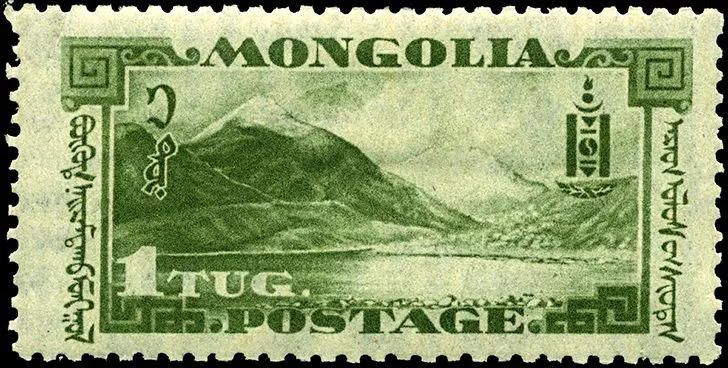
One of the reasons the great Khan’s Mongol army was so lethal is because of their fluid and flexible makeup, as well as their vast communication capabilities.
One of his earliest decrees as Khan was to establish a mounted courier service called the “Yam.”
The “Yam” grew into a military postal service spanning multiple borders, complete with a network of post houses and waystations across the whole of his Empire.
During WWII, the British & Soviets launched a joint invasion of neutral Iran.

What could both the Brits and Ruskies want with this Middle-Eastern neutral country, you ask? C’mon, don’t be that guy.
It’s Iran, for crying out loud. They wanted all of that oil – that sweet, sweet oil – and they got it!
By invading the country in 1941 during Operation Countenance, they were jointly able to secure the Iranian oilfields, as well as a secure supply line for the Allied forces.
One in 200 men are direct descendants of Genghis Khan.

The Mongolian Emperor was known for siring many, many children – at least 11!
Scientists conducted a study in 2003 that showed that one in 200 men share a Y chromosome with the conqueror.
This may not sound like a lot, but you should consider that there are roughly 3.7 billion men on the planet.
That makes a total of around 19 million men ancestors of the Great Khan!
Russia ran out of vodka when celebrating the end of World War II.

If you ask somebody to name things that are quintessentially Russian, they’ll probably say winter, communism, and, of course, vodka.
It should come as no surprise that, after being punched almost all the way to Moscow by the Nazis and then fighting their way back to Berlin, the Russians were pretty elated when they heard the news of the Third Reich’s fall.
Jubilation and street parties engulfed the Soviet Union, lasting for days and days – even non-drinkers saw this as cause enough to join in with the revelry.
That is, until all of the nation’s vodka reserves ran out. A mere 22 hours after the partying started.
There were “dance marathons” during the Great Depression.

It wasn’t exactly a means of keeping the American spirit up through the darkest financial crisis in its history, either.
These human endurance contests served as a way of giving broke married couples a roof over their head and food to eat for a few days.
The dance partners would take turns sleeping while the other propped them up and continued dancing with them.
The Circus Maximum in Rome is still the largest capacity sports arena ever built.

It was used for the execution of prisoners like Christian and Jewish people, part of the Roman Triumph, along with chariot racing.
Historians believe the Circus Maximum could hold between 150,000 – 250,000 people at any given time.
This means that it could hold more spectators than the Rungrado May Day Stadium in North Korea – the world’s largest capacity stadium – which can hold roughly 114,000 people.
The fastest surgeon ever ended up causing a 300% mortality rate.

Before anesthesia, speed was essential when performing surgery to minimize pain to the patient. Surgeon Robert Liston was considered “the fastest knife in the West.” He was a pioneer in speed surgery.
One time, when performing a battlefield amputation in front of a group of spectators, Liston cut through his patient’s leg so quickly that he accidentally cut the fingers off his assistant.
One man who witnessed the surgery was also caught by the doctor’s knife. Upon feeling it tug on his coat and seeing blood splash on him, he collapsed and died of a heart attack.
Then, to make matters worse, Liston’s patient and his assistant died of blood poisoning from their joint amputation.
This made Liston the only surgeon ever to have performed surgery with a 300% mortality rate!
Adolf Hitler’s nephew fought against the Nazis in World War II.

Born to the Führer’s half-brother Alois Hitler Jr. and his Irish wife Bridget Dowling in Liverpool, England, William Patrick Hitler (later William Patrick Stuart-Houston) moved from the UK to Germany but later in life moved to the US.
During the Second World War, he was drafted into the United States Navy, where he served as a Hospital Corpsman throughout the war until 1947.
He was wounded in action and was awarded the Purple Heart, and went on to gain American citizenship.
Charles Darwin invented his own wheeled office chair.

Although office chairs that were wheeled were already in production, they were not comfortable or in any way as ergonomic as what we have nowadays.
So, Darwin did something radical with his luxury armchair. The man was a renowned workaholic, and when he wasn’t collecting specimens or eating them, he was sat down studying them and making notes.
He found that, in his study or lab area, he would have to go through the rigmarole of walking about the office from bench to bench, desk to desk.
So, to maximize his productivity and save him some valuable study time, he decided to attach wheels to his luxurious armchair.
The first official Medals of Honor were awarded during the American Civil War.

They were awarded to Union soldiers who participated in the Great Locomotive Chase of 1862.
Volunteers of the Union Army, led by James J. Andrews, snuck in deep behind Confederate lines, commandeered an armored train, and took it northward towards Tennessee, wreaking havoc on their Confederate foes along the way.
Hollywood moved from New York to Los Angeles to escape Edison’s patents.

Hollywood is globally recognized as the movie capital of the world. Yet it wasn’t always so. The movie industry was originally based in New York in the 1800s, which was close to New Jersey – and New Jersey was where patent master Thomas Edison was based.
Edison had patents on over 1,000 different things, including most of the technology needed to make high-end movies, and boy, did he flex on them patents.
In short, if you wanted to be in the movie business, you basically had to go through Edison.
So the “independent” filmmakers chose an alternate option to fight Edison: fleeing Edison. And that’s what they did!
They moved to California, to an area of the country where the judges weren’t as friendly to Edison and his patents and where the wheels of copyright law would take longer to roll over them.
Shakespeare originated the “yo momma” joke.

Shakespeare gave the English language a plethora of slick new words, some fairly excellent poetry, including the perfected form of the sonnet, as well as a load of plays which are mostly the bane of high-school English students.
Something else he also gave us was the “yo momma” joke.
In his play, Titus Andronicus, one of the characters, Chiron, exclaims, “Thou has undone our mother,” to which another character, Aaron, replies, “Villain, I have done thy mother.”
Shots fired.
The Dutch-Scilly War lasted 335 years and had no battles or deaths.
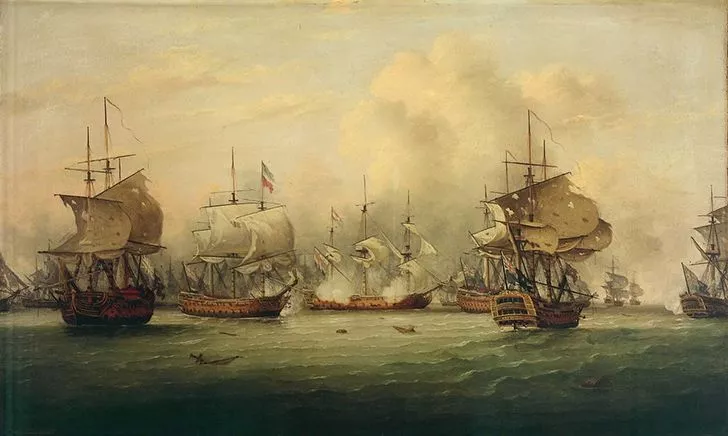
Spanning between 1651 – 1986, the war was a by-product of the English Civil War and the decision of the Dutch to side with the Parliamentarians over the Royalists.
The Royalists had raided a few Dutch shipping vessels in revenge before fleeing to the Isles of Scilly.
The Dutch turned up, demanding reparations from the Royalists, and, when they didn’t pay up, declared war. But they decided to call it a day and go home pretty sharpish as they realized the Royalists didn’t have a penny to their names.
The only thing is they never declared peace with the Isles and just completely forgot they were at war.
Then, roughly 3 centuries later, historian Roy Duncan stumbled upon a footnote in Scilly about the war. He invited the Dutch Ambassador for Great Britain to Scilly, where a peace treaty was negotiated and signed, bringing the war to an end after 335 years and no bitter bloodshed.
During World War II, Americans called hamburgers “liberty steaks.”

This was due to the fact that “hamburger” sounded a little bit too German!
Also, during World War I, sauerkraut was re-dubbed “liberty cabbage.”
The 7.62mm rifle bullet was created 132 years ago.

Even if you’re not a gun nut, you’ve probably heard someone refer to this type of ammunition before. It’s the ammunition AK47 assault rifles use.
Therefore it should come as no surprise that it was developed by the Russian Empire in 1891.
Originally designed for the Mosin-Nagant bolt-action rifle, this round is still in use today. It’s one of the most common types of firearm ammunition in history.
In 1710, Native American leaders traveled to Britain to visit the Queen.
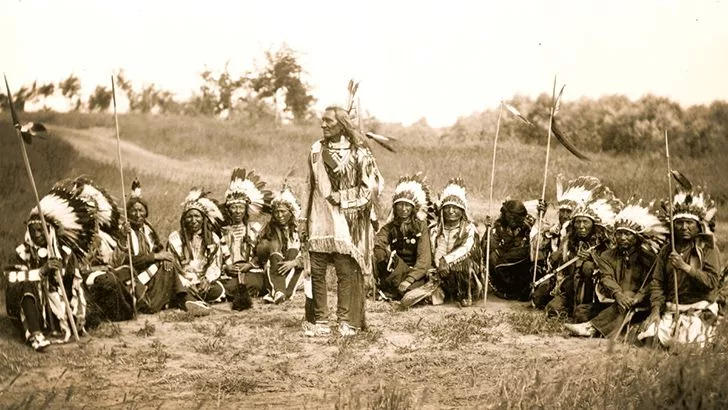
Almost 100 years before the (in)famous Lewis and Clark Expedition, the four Mohawk Kings from one of the Iroquois Confederacy’s Five Nations and the Algonquian peoples were treated with high honor as diplomats.
Transported through the streets of London in Royal Carriages, they were personally met by Queen Anne at the Court of St. James Palace.
They also visited the Tower of London and St. Paul’s Cathedral. I wonder if they got given “I <3 London” t-shirts too…
In medieval England, the word “ask” was pronounced, “axe.”

So I suppose you could say it makes sense that’s how they’d say it in Futurama if that’s how they said it in the past, right?
This pronunciation of the word was even featured in the first English translation of the Bible: “Axe and it shall be given.”
In 18th Century England, pineapples were a status symbol.

Despite the fact that they didn’t make it over to England until the 1600s, by the 1700s, owning pineapples had become a huge craze.
Those rich enough to own a pineapple would carry them around to signify their personal wealth and high-class status.
Near enough everything from clothing to houseware was decorated with exotic fruit.
And for those who weren’t rich enough to buy their own pineapples and become a part of this fad, they could rent a pineapple out to tout around in public and look the part for the day!
The first known artworks date back roughly 100,000 years ago.

It is believed to have begun with the Homo Sapiens during the Upper Paleolithic era.
The oldest known artworks were found in what is now France.
The Ancient Egyptians used slabs of stone as pillows.

In Ancient Egypt, the head was considered to be the seat of spiritual life and had to be cared for.
So therefore, when getting into bed, the Egyptians would place their heads on a stone with a curve in it.
They were also engraved with images of the Gods and placed under the heads of the dead to ward away bad spirits.
Paul Tibbets, pilot of the Enola Gay, didn’t have a funeral or headstone.

The Enola Gay is a plane that will live on in history until the end of man. As the plane dropped the first nuclear bomb on Hiroshima, it was both a sign of oppression and freedom.
The pilot of this plane was one Paul Tibbets, who, being close to death in his old age, decided he didn’t want a funeral or a headstone as he worried it would become a place for protesting nuclear armament.
Instead, he was cremated, and his ashes were scattered over the English Channel.
Adolf Hitler helped design the Volkswagen Beetle.

That’s right, the fella who gave a big thumbs up to the Holocaust also invented Herbie.
Between Hitler and Ferdinand Porsche, the iconic and globally-loved Beetle was designed as part of a Hitler-revived German initiative to create “the people’s car” – an affordable and practical car that everyone could own.
In fact, the car manufacturer’s name “Volkswagen” translates to English as “People’s car.”
Winston Churchill had a Doctor’s note to drink an “indefinite” amount of alcohol in Prohibition America.
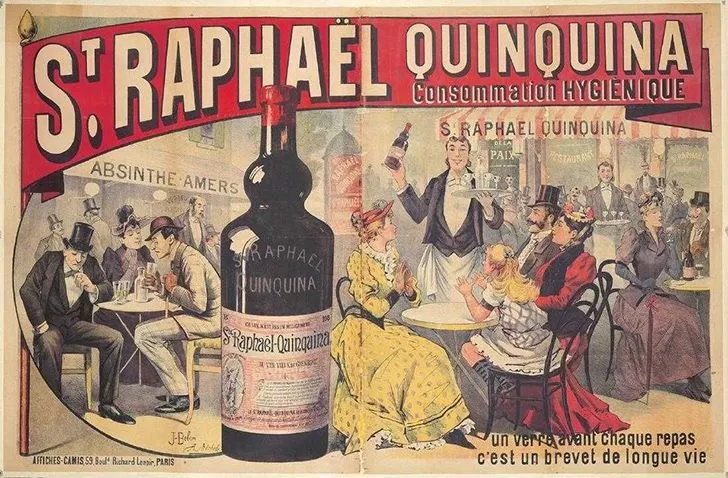
Other than defiant hand gestures, iconic speeches, cigars, and dapper hats, Winston Churchill is also renowned for his love of alcohol. Whiskey, in particular.
In 1931, Churchill was involved in a traffic collision which left him with chest pain, as well as having bouts of depression to contend with.
Because of this, he was granted a Doctor’s note in 1932 for his time in the United States. This allowed him to drink an “indefinite” amount of alcohol for his duration of time in the Prohibition-era United States.
In Ancient Greece, they believed redheads became vampires after death.

This was partly due to the fact that redheaded people are very pale-skinned and sensitive to sunlight… unlike the bronze Mediterranean Greeks.
As well as the fact that a fair bit of vampire folklore existed within Greek mythology.
America’s National School Lunch Program of 1946 was due to WWII.

America had just come out of a huge, resource-depleting war. So why on Earth would they be handing out free food for school kids?
After all, it’s no secret that food rationing in Britain continued until 9 years after the war.
This is due to the fact that the government realized by giving the children free meals, they would have a healthier draft pool if they ever needed it again.
Abraham Lincoln was a wrestling champion.

Before becoming America’s 16th President, Abraham Lincoln was an avid wrestler. He only lost one fight out of 300.
The guillotine was invented to create “equality in execution.”

The guillotine is an image that is fairly synonymous with France and the French Revolution.
Until its advent and widespread use, the regular methods of execution in France were rather savage. Punishment like being drawn and quartered was common.
The idea to use the guillotine as the main method of execution was part of the movement for equality in France that spurred the revolution.
This created equality in death and execution for citizens from all backgrounds.
The Soviet Union tried to snuff out the memory of Genghis Khan.

During the Soviet-era rule of the late 20th century, simply mentioning the great conqueror’s name was a crime against the USSR.
The Soviets removed his story from school textbooks and outlawed pilgrimages to his birthplace of Khentii.
After Mongolia gained its independence in the early 1990s, he was restored to his rightful place as a national hero of Mongolia.
He appeared in the art and popular culture, as well as on Mongolian currency.
Ferrets, dogs, and monkeys were the most popular pets in the Roman Empire.

Rather than having cats to hunt down vermin like mice and rats, the Romans used ferrets.
They also used dogs as sentries and guards, whilst they used monkeys for entertainment…
…Because monkeys are funny.
Tablecloths were originally designed to be used as one big, communal napkin.

Children wiping their mouths on tablecloths isn’t generally acceptable at the dinner table, but that was their original use!
Guests were meant to wipe off their hands and face on a tablecloth after a messy feast.
To not do this would be considered bad table manners!
A Chernobyl firefighter was exposed to so much radiation it changed his eye color.

Vladimir Pravik was one of the first firefighters to reach Reactor No. 4 of the Chernobyl Nuclear Power Plant on April 26, 1986.
His job there was to contain the flames spewing from the building.
During his shift dousing the highly-radioactive flames of the burning reactor core, he was exposed to a shockingly lethal dose of radiation.
It was so deadly that it changed his eye color from brown to blue.
Like the majority of the first responders to the Chernobyl disaster, Vladimir died 15 days later from severe radiation poisoning.
Before Julius Caesar invaded Britain, many Romans didn’t believe it existed.

Julius Caesar was the first-ever Roman to invade Britain. He did it twice in the years 55 and 54 BC. Up until this point, there were many divided opinions on Britain within the Roman Empire.
Some believed Britain to be just the foot of another huge northern continent. Others thought it was a place full of unbelievable riches, whilst most thought it just didn’t exist.
Caesar’s first invasion of Britain was, in a militaristic sense, a resounding blunder.
Yet, due to the mythical nature of Britain, his invasion of the country was a huge PR success. It made him legendary in the eyes of many Romans.
Cleopatra wasn’t Egyptian.
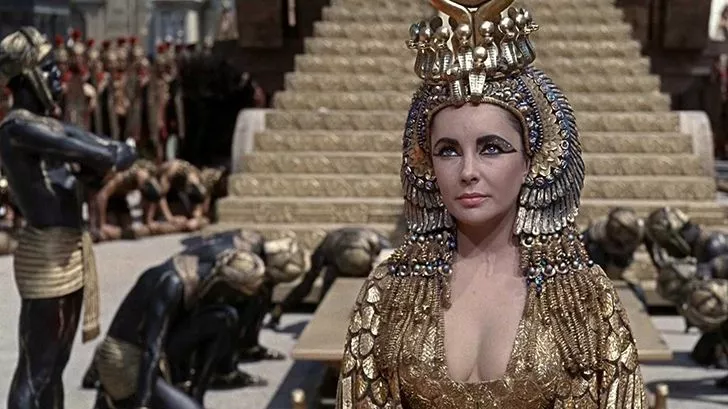
She was part of the Ptolemy dynasty, who was derived from one of Alexander the Great’s generals, Ptolemy.
Her ancestors ruled over Egypt from the city of Alexandria. Named after… you guessed it, Alexander the Great.
Bonus fact about the Ptolemy dynasty: All male members of this dynasty were called Ptolemy. It makes learning about them really confusing.
Cleopatra was the first member of her dynasty to speak Ancient Egyptian.
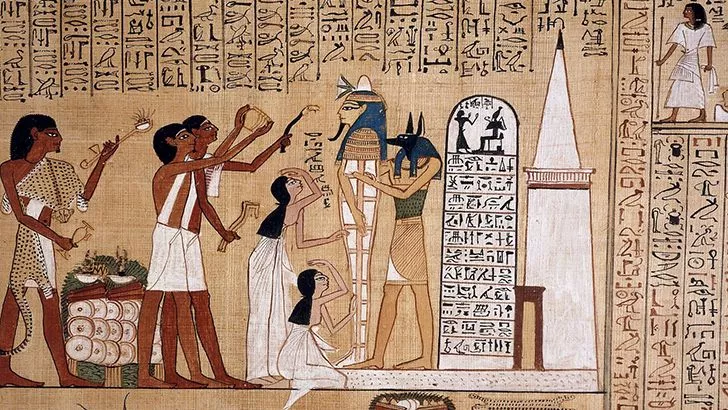
Ancient Egyptian is considered one of the most difficult languages to master in history. Well, Cleopatra was able to master it.
Along with 8 other languages, including Ancient Greek, Ancient Iranian, Ancient Parthian, Syriac, Ethiopian, Troglodyte, Hebrew, and Arabic.
Alexander the Great named over 70 cities after himself.
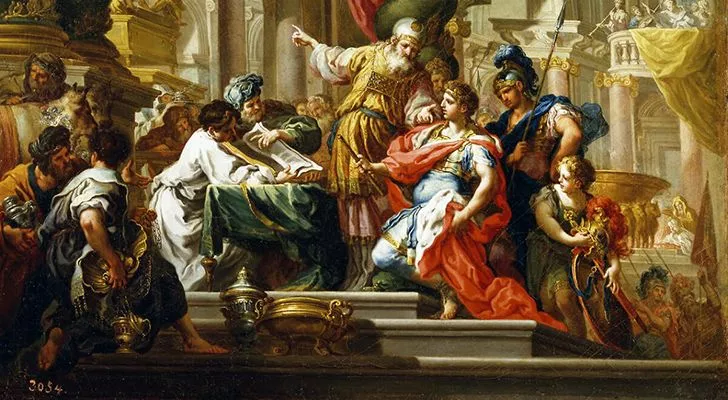
That might sound a touch egocentric on the face of it… But let’s not forget that Alexander the Great conquered over 2 million square miles of the Earth’s surface. And he did this all before he was 30 years old.
So yeah, over 70 cities might be a little excessive.
But, if you’re a boy wonder with the world literally knelt at your feet, why not go a little crazy? Am I right?!
It’s believed that roughly 97% of history has been lost over time.

I can’t really think of a more appropriate fact to end this article on really. Mainly because the chances are, you’ll only remember 3% of these history facts when you tell your friends later.
History’s documentation is so subjective, not to mention all the lost historical accounts of the world. So it’s no surprise that what we know of our history is just a snapshot of the whole thing.
Written accounts of history only started roughly 6,000 years ago. And modern humans first appeared around 200,000 years ago.
This 194,000-year gap is, in itself, huge.
However, considering all the historical writings lost over the years when written history did exist, it makes the mind wonder…
That’s the end of these 100 fun history facts!
We hope you learned something new that school didn’t teach you about history!
What was your favorite fact about history on this list? Or is there one we should really know? Tell us in the comments below!


